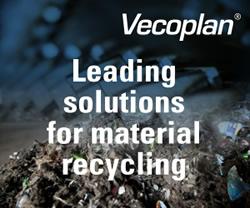IHS confirms solar wafer supply shortage in 2016
In October 29 2015, IHS issued a research note to warn about a potential solar wafer supply shortage in 2016. Now, as we enter into the first quarter of 2016, we have found new evidence to confirm this earlier concern.
In October 29 2015, IHS issued a research note to warn about a potential solar wafer supply shortage in 2016 (https://technology.ihs.com/551225/ihs-warns-of-potential-solar-wafer-supply-shortage-in-1h-2016). Now, as we enter into the first quarter of 2016, we have found new evidence to confirm this earlier concern.
• Vertically integrated Tier 1 module suppliers have an increasing gap between their wafer capacity and cell/module capacity, and they must heavily rely on outsourcing from wafer producers
• Most wafer buyers choose to have long-term contracts, or to pre-order, rather than buy on the spot market -- pricing in these contracts is usually adjusted on monthly basis
• Multicrystalline Wafer average selling price (ASP) will continue to increase in the first quarter of 2016
• Monocrystalline wafer technology is expected to increase its market share in 2016
Global wafer production increased to 61.9 gigawatts (GW) in 2015, up from 47.6 GW in 2014. Close to 40% of total wafer supply volume comes from vertically integrated players, such as Trina solar and Yingli Green Energy, which use all of their wafer production for in-house production; therefore, a very significant part of the wafer supply is not available to the wafer merchant market.
The top three independent wafer producers (i.e., those not using wafer production for internal capacity) are GCL-Poly, Xian Longi silicon, and Green Energy Technology. Together they comprised one third of total wafer market share in the last two years, including internal wafer capacity from vertically integrated players. These three players have an even stronger position in the merchant wafer market close to 60% market share in 2015), which places them on an even stronger negotiating position.
Due to strong demand, GCL, GET and other Tier 1 manufacturers are outsourcing part of their manufacturing to Tier 2 partners in China. These agreements for several hundreds of megawatts (MW) are not only punctual, but are also intended to be long term agreements, using equipment condition, wafer quality, and the financial situation of Tier 2 companies as their main criteria for the selection of original equipment manufacturer (OEM) partners.
Most vertically integrated players have for a long time opted to not increase in-house wafer capacities and outsourcing manufacturing via long term contracts with minimum fixed volumes and prices adjusted on monthly basis. Given this strong wafer demand and shortage situation, wafer manufactures do not want to lock-in the price of these contracts, although final pricing is usually linked to payment conditions.
Due to strong demand, pre-payment is being applied to many contracts, which might in the end create some additional stretch on module manufacturers balance sheets. Both contract pricing and spot pricing of multicrystalline wafers has been increasing since the fourth quarter (Q4) of 2015.
With current wafer capacity and market growth demand in a near future, wafer supply will continue to be tight in 2016. IHS estimates an 83% utilization rate for all suppliers and 88% for Tier 1 suppliers, which is the highest utilization level registered since 2010. With capacity expanding year over year, tier 1 wafer suppliers are forecasted to reach a high average utilization rate of 85% in the following three years.
Currently multicrystalline spot wafer ASP is $0.88 per piece. Some suppliers are expecting to further increase their selling price to more than $0.90 per piece. IHS expects continued stability in multicrystalline wafer pricing throughout 2016. With the continued decline in polysilicon prices, average wafer gross margin will reach 20% in 2016.
Monocrystalline wafers are expected to increase share of market in 2016, due to the increasing share of roof-top installations. In fact monocrystalline wafer production will increase to 26% of total wafer production in 2016, from 24% in 2015. Considering that monocrystalline wafer ASP has been declining for the last 12 months, the pricing gap between monocrystalline and multicrystalline wafers is becoming increasingly narrow. Monocrystalline wafer ASP will not fall lower than multicrystalline wafer ASP, and the pricing of monocrystalline wafers should stop declining faster than multicrystalline wafers this year. Overall, IHS forecasts a blended wafer ASP of $0.20 per watt (W) in 2016, a decline of nearly 1% over 2015.
Questions remain about the effect of this strong wafer pricing on module suppliers manufacturing cost and margins. It is not yet clear if manufacturers would opt to reduce their current margins in light of high material costs, or if they would try to pass along part of this cost increase to their customers, which could lead to increasing module prices in some markets.
Featured Product

Vecoplan - Planning and implementation of complete processing plants in refuse derived fuel production
In order to reduce the costs involved in the energy-intensive production of cement, many manufacturers are turning to refuse-derived fuels (RDF), considerably reducing the proportion of expensive primary fuels they would normally use. Solid fuels are being increasingly used - these might be used tyres, waste wood or mixtures of plastics, paper, composite materials and textiles. Vecoplan provides operators of cement plants with proven and robust components for conveying the material and separating iron and impurities, efficient receiving stations, storage systems and, of course, efficient shredders for an output in various qualities.
